To continue the last article from a few weeks back, soft wing sails are a natural step forward from the cambered junk sail. The highlights of the junk rig are easy low-tech construction and ease of handling. There have been forays into the world of wingsails but most of them do not share those two mentioned advantages of the junk rig. David Tyler’s designs however does. I’m going to go through a brief(?) background on his designs, so I can move forward with my current one.
Design background
In a thread on the Boatdesign.net forums he introduces himself, goes through his recent history of sailing 40.000 miles with his soft wing sail with the junk rig properties of easy reefing and handling, and acknowledges that his last design had a few flaws that needs to be corrected. The thread is very informative and goes through a lot of aerodynamic theory, as well as include the usual internet forum naysayers, but I highly recommend reading it from start to finish if you have interest in this topic. I’ve read it myself three times now I think and I’m soon going to read it a fourth time.
Here is an illustration of the design he sailed 40.000 miles with:
The basic recipe is as follows:
1. Find an airfoil with decent properties for low speed sailing (as opposed to a high speed aircraft)
2. Use a hinged aft batten to create an assymetrical foil shape
3. Create a forward batten that encapsulates the mast, most of all to increase aerodynamic efficiency
The think thank starts off with a design using a V-shaped aft batten design:
Lots of hemming and hawing later, he starts to doubt whether his V-shaped aft batten is the best idea.
He decides to yet again use the single batten aft and makes a sail using these specifications. This time however with a hinge that articulates both horizontally and vertically, which will later prove to be a mistake.
This works well for a while, he reports the following:
1. Remembering my terms of reference – an easily handled rig for ocean cruising, and cruising to wild places, with all the benefits of junk rig but with windward performance as good as I can get it – I think I’m getting there.
2. I’m sailing rather closer to the wind than with my “Fantail” junk sail, with good boat speed. Don’t ask me for numbers that would apply to other boats – because Tystie is quite unlike any other boat (except her one sistership), they would be meaningless.
3. Two days ago, I beat through some narrow channels in the Broken Group, Barkley Sound, with only enough room to gather boat speed before it was time to tack again. I was making 90 degree tacks in 5 – 10 knots of wind, on the GPS track (ie, with leeway taken into account). Pretty good, I thought. Bermudan rigged boats couldn’t have/wouldn’t have done it.
4. Yesterday, with 15 – 20 knots of wind, I beat into the entrance to Ucluelet Inlet in the fog, making about 120 degrees between tacks on the GPS in the choppy sea. This is about as good as I’d expect to get, in the conditions.
5. Helm balance is neutral in about 10 knots of wind, and with a little weather helm in one-to-two reef conditions (that’s all the wind I’ve had so far).
6. The sail is taking a good shape from the centreline of the luff and around the lee side.
7. The windward side of the sail, from the luff back to the half way, or widest point, of the nose is tending to collapse inwards, as it did with my previous wing sails. I addressed this in those sails by adding three “riblets” between noses, and it seems as though, if I want a sail that’s good to look at, I’ll need to do the same again. They probably ought to extend far enough aft to bear against the mast. They can be made from, say, 10mm alloy tube. Will it have any effect on performance? I don’t know, though it ought to have, if the first few % of the windward side are in their designed shape.
8. And finally – most of the bermudan-rigged boats here are motoring a lot of the time. I can’t find one with whom I can surreptitiously try to sail alongside. If they’re so good at sailing to weather, why don’t they do it?
But the joy is somewhat short lived. Soon after this, he finds himself in the position where he is running before the wind and tries to take in a reef. The top battens “capsize” (leans to one side) and refuses to come down by themselves. This is obviously an inconvenient scenario. Not long after, the same thing happens again and some of the battens break. Back to the drawing board.
I’m now absolutely certain that there cannot be a second, horizontal, axis of articulation in the battens. There can be a malfunction, with the noses tending to rotate about their axis so that they are almost “on edge”, as much as the mast diameter inside them will permit.
After a lot of thinking and going through options, an old idea he had already forgotten about resurfaces. Instead of building the front wishbone using two pieces encompassing the mast, with their needed crossbeams which weaken the whole structure, a single sturdy batten with a U-shaped jaw could be used:
It’s this particular design that peaks my curiosity and I start considering scrapping my idea of a junk rig and instead construct a soft wing sail! The design goes on to evolve into this:
Shortly after, yours truly joins the thread and the rest is a work in progress.
My own drawing looks like this currently:

The green lines are the Clark Y foil that serves as a basis for the shape, the black lines are the sail.
Wing sail construction details
The design is still unfinished. Here are the details I’ve come up with so far.
Aft battens
Aluminium, square, 50x50x2 mm rectangular, 60x40x2.5 mm, approx 2.3 meters long. Reinforced somehow (GRP? CFRP? Unless I find a good sized square profile that has an appropriate inner diameter).
Hinges
A single double wedge made out of hard- or laminated plywood, reinforced using GRP. Pivot shafts maybe a bit loose to allow for some vertical articulation. The wedge will be bonded to the aluminium tube using Sikaflex, epoxy or both.
Edit (19 January, 2015): I made some calculations and realized that a single joint will be too short as it has to articulate 20 degrees to each side. The only viable option is to use a double wedge. This also requires me to use square or rectangular both fore and aft, which isn’t a problem like it is on the junk rig where the battens can rotat rather freely, as the U-shaped jaw keeps the battens positioned correctly. This also slightly simplifies construction of the jaws.

The new double wedge provides a total of 40 degrees of articulation between the front and rear battens (20 degrees to each side)
Front battens
Aluminium, round, 50×2 mm rectangular, 60x40x2.5 mm (maybe! need to do some strength calcs), approx 1.3 meters long. Rear part reinforced with 54×2 mm tubing.
Jaw/ring
Plywood, laminated. Not sure whether to build the jaw and nose in the same piece, build them separately and attach them using screws/bolts or build them separately and glue them together permanently.
Sail
The sail will be made out of polytarp, 2.7 m wide, three pieces. The part at the aft batten will be a single sheet. The part at the forward batten will be in two parts, each around the mast. They will most likely be joined using a zipper (velcro was on the list, but David’s experiences speak against it).
The sail will be attached to the aft battens using batten pockets like the ones illustrated on the right in the above image. The front (doubled) part or the sail will most likely be fastened to the jaw/nose using screws through the sail into the nose/jaw using grommets.
Where to go from here?
That’s about it for now. I will keep updating the site with further developments as we go along, so stay tuned!
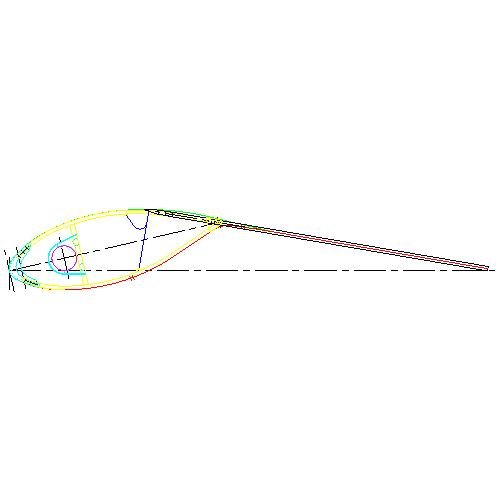
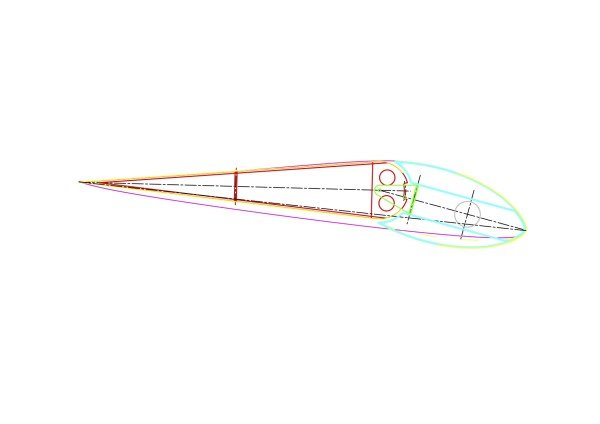
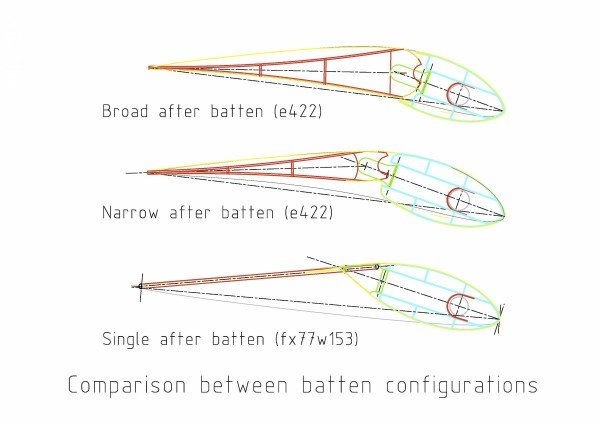
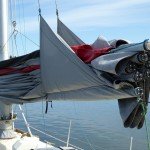
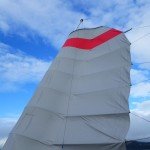
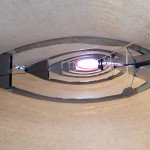


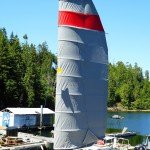


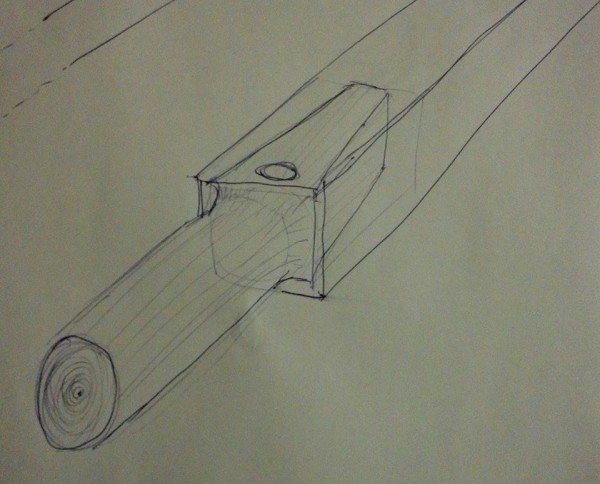
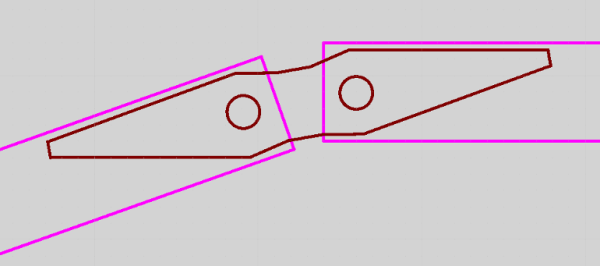

Very interesting project!
First i wanted to build a NIS26. But unfortunately it is sold as Kit only an will be too expensive for me.
So i bought this plans:
http://www.bandbyachtdesigns.com/princess26.htm
your softwing rig is very interesting.
Do you think you have to build a deeper Keel for compensating the bigger topweight of this rig?
I wish best success to your dream!
regards
Sönke
I’ll have to do some calculations to see whether aluminium spars will suffice or if carbon would be required. I’m sure extra ballast will be needed in some form, compared to the carbon cat ketch rig, but I haven’t thought through any details yet. I’d prefer to keep most of the ballast internal as far as possible. Maybe in the form of added steel bottom plating. The NIS 31/35 is still a bit into the future so I’ll focus on my current boat and rig first and see how it goes. 🙂
I hadn’t realized that they only sell the smaller NIS’s as kits. In that case the Princess Sharpie looks like a nice alternative. It doesn’t fit my requirements though, which include enough space for (2 people) living aboard and the occasional offshore endeavour.
Hi very interesting I am currently building a 77ft cat have you thought of making the batterns out of twintex you could design in the hinge point because twintex uses polypropylene and glass it will flex without breaking.
Lots of interesting thoughts! I’ve been interested in wingsails for a while now and have looked at many of the offerings on the ‘net.
From my own point of view, I would regard it as a development of the chinese rig (which is a flat-plate aerofoil, after all) and my focus would be on simplicity and the sort of light loadings associated with the junk rig.
A lot of complexity (equating to poor reliability and extra weight) goes in to designing variable camber systems. Symmetrical aerofoils work well, albeit with some loss of performance in lift, but Pitts biplanes do just fine!
I love simplicity and also the need to reduce weight and drag aloft.
I have a friend who makes violins and has been doing so for nearly 40 years. His instruments are excellent and highly regarded. He shuns those who seek the holy grail of Stradivari’s “secret” and insists that he just did what was already established, but with consummate care and commitment.
We have the advantage of technology and materials to make the Chinese rig as good as it can be and live with its drawbacks as well as its advantages.
Kurt Jon Ulmer has posted a telling article about “Mehitabel’s” rig which is emphatically a flat junk. When we try to reinvent, new stresses occur, where they needn’t be. Competitive sailing (been there) has rather sullied our appreciation of a truly great concept.
The huge forces which can be encountered at sea are enough of a problem without adding those of our own creation.
I once had a brief and very pleasurable sail aboard the 12 Metre “Sceptre”. Elegant and powerful, her 32 tons never dropped below 9.5 knots while I was at the helm. Marvellous, except there wasent a single piece of rope on board that could be pulled by hand………
i read your peice and am curious to see your progress. i am building a 16 ft sailing canoe with out riggers,1/8 in, ply stressformed and will make my own sails. soft wing sail seams the way to go, eventually, so am surfing to see what people are doing.good luck,and keep me informed.
allen glover
p.s. i built a 28 ft quadmaran in the 80’s!!!
I will be very grateful to be informed about the evolution of your proyect.
Thanks
G.T.
wonderful posting. the variety of views it generates is fascinating. I am sailing in a river and trying to build an old motor boat into a sail boat. I am poor and tend to build recycled stuff into boats. The article was very informative.
Dr. Hugh Elkaim developed a hard wing sail for an autonomous sailing catamaran. It is free rotating with the flaps being controlled by WiFi and step motors.
It proved that when the flaps were at the zero position i.e. feathered like a wind vane with no lift the drag was much less than the normal bare mast and rigging. Therefore a disadvantage to have a soft wing sail to be lowered. Certainly an interesting development worth checking his website for details.
Oscar, do you have design plans for this type of rig that can be added to a used ketch?
In case someone reads this some day a good solution to the hinge problem that s super strong and safe is Flexures. They use them on helicopter rotors instead of hinges. Quote,
“…Modern rotor systems may use the combined principles of the rotor systems mentioned above. Some rotor hubs incorporate a flexible hub, which allows for blade bending (flexing) without the need for bearings or hinges. These systems, called “flexures”,[20] are usually constructed from composite material. Elastomeric bearings may also be used in place of conventional roller bearings. Elastomeric bearings are constructed from a rubber type material and provide limited movement that is perfectly suited for helicopter applications. Flexures and elastomeric bearings require no lubrication and, therefore, require less maintenance. They also absorb vibration, which means less fatigue and longer service life for the helicopter components. …”
https://en.wikipedia.org/wiki/Helicopter_rotor#Semirigid
https://en.wikipedia.org/wiki/Flexure
If I remember correctly they are made from flat sheets of fiberglass with elastomers in between the sheets. This would provide good flexing in only the direction you wanted and if it’s good enough for a helicopter then it will surely suit a sail.
very interesting
where can l find more recent reports?